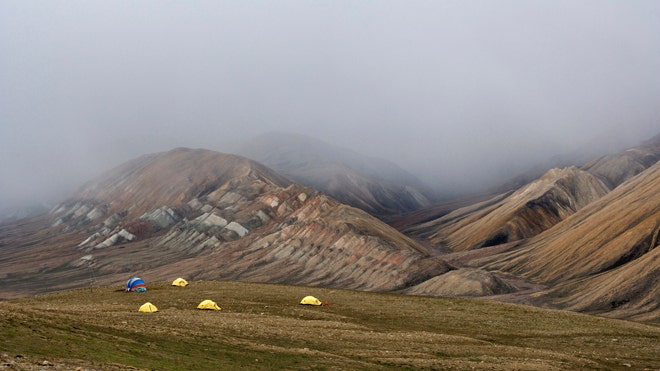64,000 Irish people give up private health insurance

A TOTAL of 64,000 people dropped their health insurance last year, according to latest figures from the Health Insurance Authority.
It said that at the end of 2012 there were just under 2.1 million people with in-patient cover. The average premium paid last year per person (including children) was €1,048 – net of tax – an increase of 12pc from 2011.
At the peak of the market in 2008, there were almost 2.3 million people with in-patient private health insurance.
It means that now over 45pc of people have cover, compared with nearly 51pc at the peak.
Italian election hurts sentiment
EUROZONE sentiment tumbled in March, ending a six-month trend of gains due to fears of renewed political uncertainty following Italy’s inconclusive election.
The Sentix research group said its monthly index tracking investor sentiment in the eurozone fell to -10.6 in March from -3.9 in February.
This compared with a Reuters consensus forecast of -5.2.
“The reason for this setback is obvious: it is the outcome of the election in Italy which has caused uncertainty over the country’s future development to skyrocket,” Sentix said in a statement.
Latvia will apply to join EU in 2014
BALTIC state Latvia has decided to apply to join the eurozone next year. This is a sign of the faith in the currency which still exists in eastern Europe after three years which have threatened the project.
Latvia pegged its currency to the euro after joining the European Union in 2004.
Latvia and Lithuania, which pegged in 2002, stuck with the links through two years of turmoil after 2008 which saw their economies shrink by up to a fifth.
Both have recovered strongly – in Latvia’s case helped by an EU and IMF bailout in 2009 – and have been on track to seal membership of the 17-member club after neighbouring Estonia joined successfully in 2011.
Flights grounded in Iberia strikes
SPANISH airline Iberia has said that about 1,300 flights will be cancelled this week as workers begin a second round of strikes. The action is in protest at the loss-making company’s plans to lay off almost a fifth of its workforce.
The government has ordered a minimum amount of services should remain, meaning 85pc of long-haul flights, 62pc of medium-haul and 47pc of domestic flights are guaranteed.
Majority of Irish motorists struggling to pay their bills


Nearly 60 per cent of people say they had difficulty paying for either fuel, car tax, NCT or motor insurance over the last 12 months.The majority of motorists in Ireland are struggling to keep their cars on the road, according to a new survey.
The survey, conducted by AA Ireland shows that 58 per cent of people agree that they have struggled to fund either fuel, car tax, NCT or motor insurance over the previous year.
Of the 9,600 people who carried out during January of this year, a total of 79 per cent said they plan to stick with their current car for as long as possible.
Of the respondents, 28 per cent are saving or have saved for when they next go to purchase a new or second hand car.
Some of the respondents said that finances have become so tight, they were forced to take their cars off the road for periods stretching from a few weeks to a few months.
Director of AA Consumer Affairs Conor Faughnan said there is growing financial pressure placed on drivers.
Motorists have been squeezed and squeezed and clearly the money they’re putting into running their cars has to come from elsewhere,” he said.
From what we’re hearing from the front line we’re going to be seeing more and more older vehicles on our roads and drivers need to be really conscious of wear and tear.”
Eir-Grid identifies potential routes for Grid West
EirGrid said no decisions regarding the final corridor or route have been made at this stage
Potential routes for a high-capacity overhead power line in the west of Ireland have been identified by EirGrid.
It is proposed that the €240m line will link Bellacorick in Co Mayo to the electricity grid at either Flagford in Co Roscommon or Casla in Co Galway.
The Stage 1 report on the Grid West project identifies a number of kilometre-wide “corridors” for the line.
One of these, between Bellacorick and Flagford, is described as the “least constrained”.
It is considered to be the corridor that best avoids environmental, heritage or technical issues that have been identified.
This route travels near the towns of Ballina, Swinford and Ballaghaderreen before terminating at Flagford, close to Carrick-on-Shannon.
The project is part of a wider plan to upgrade the national grid by 2025.
EirGrid is seeking public feedback on the proposed corridors and will be holding eight open days in Galway, Roscommon, Leitrim and Mayo in the coming weeks.
The company said no decisions regarding the final corridor or route have been made at this stage.
The Industrial Development Authority has said upgrading the country’s electrical infrastructure is essential for future competitiveness.
Brendan McDonagh of the IDA’s Business Intelligence Division said energy security was a key component in attracting multinational corporations.
Mr McDonagh said the provision of a strong, secure electricity supply was vital in the effort to attract inward investment to the region, particularly in the information and scientific sectors.
The Council for the West has appealed to communities and landowners in the area to support the Grid West project.
Chairman Sean Hannick said concerns about electricity supplies had been an issue over the last ten or 15 years and had a negative impact on getting new industry to set up in the western region.
My brain’s is so tired!
Scientists looking at seratonin find you may well be right
Physical exhaustion can occur when the brain – as well as the muscles – grows tired according to a study that sheds fresh light on the role played by the mind in determining endurance levels.
Scientists have found that a key neurotransmitter in the brain, which controls the signaling process between nerve cells, can determine whether someone feels exhausted following physical exercise or after taking anti-depressant drugs such as Prozac.
Although levels of serotonin rise during exercise, which provides a psychological boost and “feel-good” factor, it can also result in a widespread central fatigue that ultimately leads to someone feeling exhausted and unable to carry on, scientists found.
Researchers led by Professor Jean-Francois Perrier of the University of Copenhagen found that while serotonin helps to keep people going during the early stage of vigorous exercise, a build-up of the neurotransmitter in the brain can have the opposite effect by causing “central fatigue” of the nervous system even when the muscles are still able to carry on.
“We can now see it is actually a surplus of serotonin that triggers a braking mechanism in the brain. In other words, serotonin functions as an accelerator but also as a brake when the strain becomes excessive,” said Professor Perrier, whose study is published in the Proceedings of the National Academy of Sciences.
“The discovery brings us a step closer to finding ways of controlling serotonin. In other words, whether it will have an activating effect or trigger central fatigue. It is all about selectively activating the receptors which serotonin attaches to,” Professor Perrier said.
“For selective serotonin re-uptake inhibitors [eg Prozac] we can possibly help explain why those who take the drugs often feel more tired and also become slightly clumsier than other people. What we now know can help us develop better drugs,” he said.
EU tobacco product firms ‘must accept damage they are causing’


Minister for Health James O’Reilly (right) and Chief Medical Officer Tony Holohan pose in the RHA Gallery in Dublin with photographs which will appear on cigarette packaging sold in Ireland.
EU tobacco-producing countries must accept damage to their industry in the drive to stop people smoking, Minister for Health James Reilly has said.
Ireland had prioritised a plan to ban flavoured tobacco and stylish cigarette packaging even if this hurt jobs in the tobacco industry in some countries, he said today following a two-day meeting of EU health ministers in Dublin.
“We have to remember it should never be a case of jobs or lives,” he said.
He said the EU should help countries to “get out of tobacco production” and to develop other types of industry instead.
European health commissioner Tonio Borg also acknowledged there would be opposition to the proposed ban. “It is natural in those countries where tobacco production is high there will be considerations other than health which will be put forwards to put it mildly,” he said.
The aim of the law was to prevent young people from starting smoking, said Mr Borg. “Tobacco products should look like tobacco products … and it should taste like tobacco,” he said. It was hoped the effect would be a 2 per cent reduction in the number of smokers over five years in the EU. This would represent 2.4 million less smokers, he added.
Thirteen EU states produce tobacco, including Italy, which produces the biggest amount, followed Bulgaria, Poland and Spain.
The ban would affect menthol cigarettes, which are sold in Ireland, and vanilla flavoured cigarettes. Stylishly packaged cigarettes were a particular problem, Mr Reilly said. “That’s what they are trying to attract our children to, particularly young girls,” he said.
The Minister said he was hoping to win agreement from other health ministers on the directive during Ireland’s presidency of the EU which lasts until June which would then be submitted to the European Parliament for approval. The aim was to have agreement on the directive by next year and to have it enforced by 2015 or 2016.
He said 700,000 European were dying each year and the tobacco industry were looking for people to replace them. “They are focusing on children,” he said.
He said he supported a proposed new law in Ireland banning smoking in cars carrying children under 16, adding it was a “child protection issue”. The law could be enacted later this year. Since February 1st all cigarettes sold in Ireland must now carry graphic images and health warnings about the dangers of smoking.
Ancient Arctic camel a curious conundrum


The fossil evidence consists of about 30 bone fragments, which together form part of a limb bone of a Pliocene camel.Found on Ellesmere Island, this is the northernmost discovery of camels in the Arctic, about 1,200 km further north than the Yukon camel.The fossil record from this area shows the camel lived about 3.5 million years ago, when the region supported a boreal-type forest.Ellesmere Island..
“Fyles Leaf Bed site” refers to an exposure located about 9 km Southwest of the Beaver Pond site near Strathcona Fiord. The section was visited previously by John Fyles (Geological Survey of Canada), and briefly in 1992 by Fyles and Richard Harington. In 1992 they prospected for about 2 hours. The first detailed stratigraphic work on the site was by Adam Csank (supervised by Jim Basinger) as part of his M.Sc. thesis (2006). At the time Adam measured 40 m of section, but in 2008 John Gosse determined that the Tertiary section was 90 m in thickness. (Martin Lipman, Canadian Museum of Nature)
Next Slide Previous Slide
OTTAWA – Ancient, mummified camel bones dug from the tundra confirm that the animals now synonymous with the arid sands of Arabia actually developed in subfreezing forests in what is now Canada’s High Arctic, a scientist said Tuesday.
About 3.5 million years ago, Strathcona Fiord on Ellesmere Island’s west-central coast would have looked more like a northern forest than an Arctic landscape, said paleobotanist Natalia Rybczynski of the Canadian Museum of Nature in Ottawa.
“Larch-dominated, lots of wetlands, peat,” said Rybczynski, lead author of a study published Tuesday in the journal Nature Communications. Nearby fossil sites have yielded evidence of ancient bears, horses, deer, badgers and frogs. The average yearly temperature would have been about 32 Fahrenheit.
“If you were standing in it and watching the camel, it would have the feel of a boreal-type forest.”
The Arctic camel was 30 percent larger than modern camels, she said. Her best guess is it was one-humped.
Although native camels are now only found in Africa and Asia, scientists have long believed the species actually developed in North America and later died out. Camel remains have been previously found in the Yukon.
What makes Rybczynski’s find special is not only how far north it was found, but its state of preservation.
The 30 fragments found in the sand and pebbles of the tundra were mummified, not fossilized. So despite their age, the pieces preserved tiny fragments of collagen within them, a common type of protein found in bones.
Analyzing that protein not only proved the fragments were from camels, but from a type of camel that is much more closely related to the modern version than the Yukon camel. Out of the dozens of camel species that once roamed North America, the type Rybczynski found was one of the most likely to have crossed the Bering land bridge and colonized the deserts.
“This is the one that’s tied to the ancestry of modern camels,” she said.




No comments:
Post a Comment